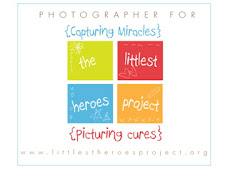I'll admit that this walk through photographic history will be unlike any you have ever taken before because of the subject of the photos. I chose old tombstones for this walk for a few reasons. Number one, I am fascinated with the lives of people I never knew and number two, each tombstone tells a story. Some are weathered and worn with the engraving all but gone and others are still very clear to read. So take a walk with me as I tell you about the history of photography and the tombstones tell you the history of Coles County, Illinois.
The first type of photo is called a Daguerreotype. This first form of photography was popular from 1839-1855 and the images were captured directly on to a thin piece of silver-plated copper. Since there were no negatives, there were no copies so each image was unique. I loved the angel in this photo. The next advance to come along was Albumen which allowed the first paper copies of photographs. The negatives were captured on glass and then printed on paper using albumen from egg whites to bind light sensitive chemicals to the paper. Notice the dates on the second photo and how Susan lived to the ripe old age of 115 which was virtually unheard of in those days. Aunt Polly also lived a pretty long life.
The next advance to come along was Albumen which allowed the first paper copies of photographs. The negatives were captured on glass and then printed on paper using albumen from egg whites to bind light sensitive chemicals to the paper. Notice the dates on the second photo and how Susan lived to the ripe old age of 115 which was virtually unheard of in those days. Aunt Polly also lived a pretty long life.


The third type of photograph is called a Cyanotype because of the cyan or blue color. Developed in 1841 this process used ultraviolet light to convert light sensitive chemicals to Prussian blue. Can you guess what else this process is used for? If you guessed blue prints then you are correct! This photo intrigued me because Oliver Sallee was a Civil War soldier, yet, someone still put a flag by his grave in recent months! This stone also replaced an older stone that was either destroyed by vandals or stolen. The next advance to come along was Platinum which was used from 1873 until 1920. Platinum based developing placed the paper in direct contact with the negative which resulted in a high quality prints that was very stable for the time. However, the high cost of platinum made this process an expensive method to use. Notice this first photo. Dennis F. Hanks was a tutor to, none other than, President Abraham Lincoln! Cool, huh? The third photo was a child who passed at 1 year, 2 months and 24 days into his life. The stone stood alone under a huge tree.
The next advance to come along was Platinum which was used from 1873 until 1920. Platinum based developing placed the paper in direct contact with the negative which resulted in a high quality prints that was very stable for the time. However, the high cost of platinum made this process an expensive method to use. Notice this first photo. Dennis F. Hanks was a tutor to, none other than, President Abraham Lincoln! Cool, huh? The third photo was a child who passed at 1 year, 2 months and 24 days into his life. The stone stood alone under a huge tree.

 The last method I will use today is early color or autochrome. This was a popular method of producing some of the first color photos and was developed in 1904 by Auguste and Louis Lumiere. This method used potato starch granules that were dyed red, green and blue to create colored images on glass, similar to a slide.
The last method I will use today is early color or autochrome. This was a popular method of producing some of the first color photos and was developed in 1904 by Auguste and Louis Lumiere. This method used potato starch granules that were dyed red, green and blue to create colored images on glass, similar to a slide. Just an interesting walk back into the history of photography through the tombstones of the people who lived in that those time periods!
Just an interesting walk back into the history of photography through the tombstones of the people who lived in that those time periods!
Big Boo Cast: Episode 416
1 day ago












2 comments:
Wow we have come a long way with how we develop photos. You did a great job explaining everything and love the pictures. I could really see the different colors.
These photos are really good.
Post a Comment